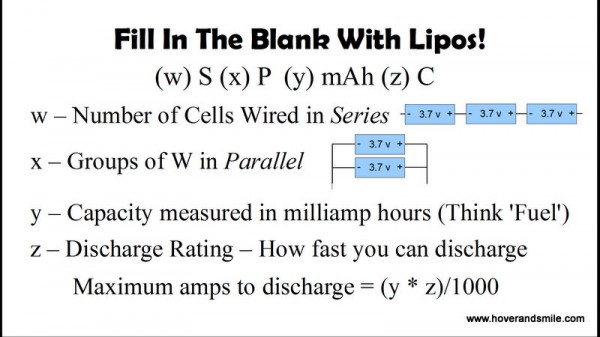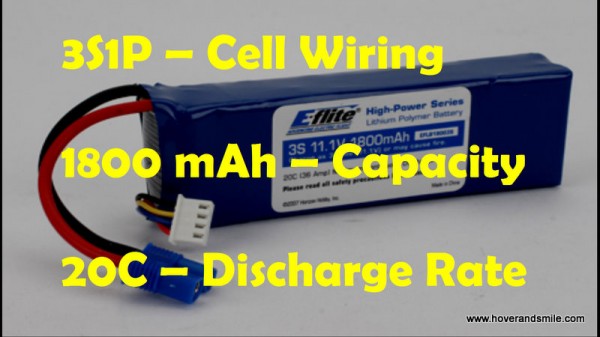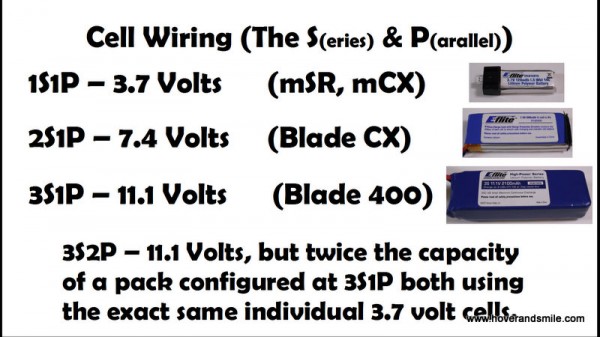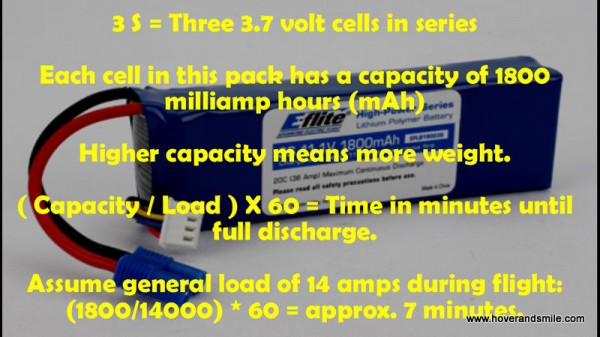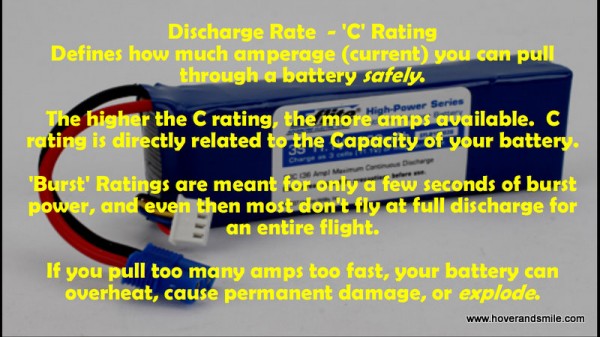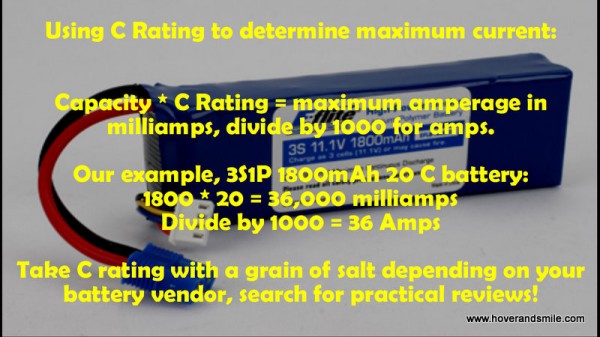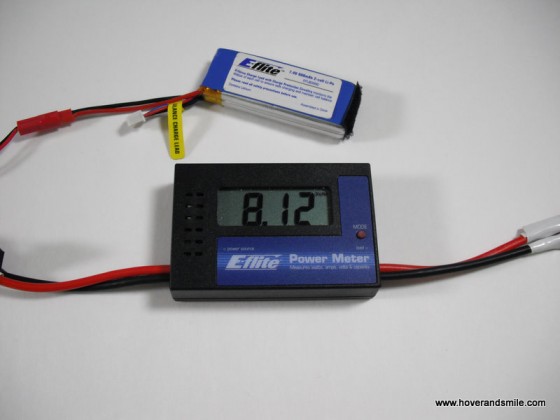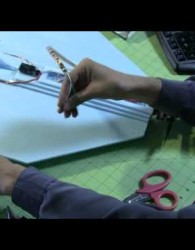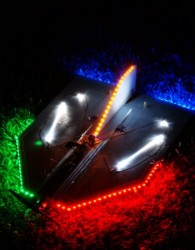Date posted: April 27, 2010
– Download LiPo Batteries as PDF –
Welcome to our first video in our RC Electric Power Circuits and Components series. One of the earliest videos I made was a relatively crude but high level introduction to RC circuits, so I’m including it in the series for posterity’s sake as Part #0. You’re currently reading Part 1 – Li-Po Batteries.
This video/article and the next few will go into a little more detail about the primary players in our examination of RC circuits, and those players are your Li-Po Batteries, Electronic Speed Controls and Electric Motors. After that we’ll put them all together to look at circuits as a whole, and together we’ll make sense of kV ratings, C ratings, Amp Draw, mAh, series and parallel batteries, thrust to weight ratios, prop sizes, and so on and so forth. We’ll still keep this at a high to medium level, we want to arm you with the basics, and perhaps in the future we’ll dive into extreme detail.
We hope you’ll find this information useful not only if you’re a scratch or kit builder, but also if you’ve bought a ready to fly model and want to understand how the circuits work. Remember that not all pieces of your model will last forever, and if you need to replace a battery or motor, you’ll have a better understanding of what will and what won’t work for your specific craft.
Li-Po Batteries
Li-Po (Lithium Polymer) batteries have been our greatest advancement yet towards everyday electronic RC flight. They weigh less than Nickel Metal Hydride (NiMH) and Nickel Cadmium (NiCad) batteries but supply the same power, so that’s what we’ll focus on here. Li-Po battery packs start at a basic component called a cell, which has a nominal voltage of 3.7 volts. Fully charged, the cell delivers 4.2 volts, and this drops off as the battery is drained. I typically discharge mine to around 3.6 volts, but often you’ll feel a noticeable decrease in power while flying near the end of your pack’s charge – when this happens – land immediately. Discharging a Li-Po battery too far damages the battery’s life span and can potentially be a heat issue. NEVER let a Li-Po pack go under 3 volts per cell. These are the rules of Li-Po batteries to live by if you want a long battery life and want to reduce the risk of overheating or explosion.
How do you know when the battery is drained enough while flying? You’ll notice either by power loss, or you can program some electronic speed controls that have a low-voltage cutoff capability, battery alarm, or use a LVC – Low Voltage Cutoff switch in your circuit. You can also just land occasionally, measure the voltages of your cells, and keep track of how long you were flying. Once you learn the ‘point of no return’ with your battery, you can time your flight and use that as a marker in the future as when you should end the flight and replace the battery.
Larger Li-Po packs are just multiple 3.7v cells wired together to get more capacity and voltage. Let’s break down the most common characteristics of any Li-Po battery you’ll see online with the following ‘fill in the blank’:
(w) S (x) P (y) mAh (z) C
w Cells wired in series,
x Groups of w in parallel,
y Milli-amp hours of capacity,
z Discharge rate.
Total number of cells = w multiplied by x
Maximum amperage discharge: (y multiplied by z) milliamps, divide by 1000 to get amps.
For example, the stock battery that comes with my Blade 400 helicopter has characteristics that matches the following:
3S1P 1800 mAh 20C
Let’s break down the pieces into three parts, cell wiring, capacity, and discharge rate.
Cell Wiring
The S and P stand for series and parallel, respectively. Your most basic battery packs are 1 or more Li-Po cells wired in series, and have no batteries wired in parallel, which is why the 1P is often dropped from descriptions – it’s assumed. Look at this diagram of the same battery in terms of individual cells:
Your smaller helicopters like the Blade mSR and ParkZone Vapor use one single Li-Po cell.
Every time you add a battery in series it increases the voltage by 3.7 volts. So, a Blade CX3 coaxial helicopter, which takes a 2 cell (that is, 2S1P) Li-Po pack, uses 7.4 volts, while the Blade 400, which takes a 3 cell (3S1P) pack – yields 11.1 volts.
Wiring cells in parallel doesn’t increase the amount of voltage, but it does increase the capacity of the battery pack. A 3S2P Li-Po pack actually contains 6 cells, 2 pairs of 3 cells wired in series, and each group of three wired in parallel.
So now you know what the S and occasional P mean when describing a battery.
Capacity
This battery pack has 1800 mAh hours of capacity available. Think of capacity as your fuel tank – the larger the capacity, the longer you can fly – but also the more weight a battery will have, so it’s another ‘give and take’ example. Since wiring in series like this battery pack doesn’t increase our capacity but it does increase our voltage, each individual cell has a capacity of 1800 mAh.
The term milliamp hour describes how many amps would fully discharge the battery in one hour. Our 1800 mAh pack would be fully discharged in one hour if we pulled exactly 1.8 Amps (1800 milliamps) through the pack (i.e. the ‘load’ on the circuit).
Now, 1.8 amps isn’t enough to really drive a helicopter, so say a helicopter needs 14 amps (14,000 milliamps) to fly properly. This means we’d have only 7 minutes worth of time until the pack is discharged (although you don’t fly to complete and total discharge). You arrive at that value through this equation:
( Capacity / Load ) X 60 = Time in minutes until full discharge.
Just remember that changing a battery for one with higher capacity gives longer flight time, but also adds weight, which in turn increases your load on the circuit – since the motor has to work harder!
Discharge Rate
The magical “C” rating is defined as how fast you can discharge your battery safely. A higher C rating means you can pull more amps through your circuit before the battery starts taking damage.
You’ll often see a ‘Burst’ rating as well, which of course means maximum power output for say around 10 seconds or so. You definitely don’t want to run your craft continuously at this level of power output.
So what does the C itself mean? If 20 C is our discharge rate, we need to know the ©apacity of our battery to determine the true amp discharge. Take your Capacity and multiply it by your C rating – that is the maximum amperage discharge you’ll want to have during your flight. So, our 1800 mAh 20C battery supports no more than 36 Amps being pulled through the battery safely (Capacity multiplied by ‘C’ rating, then divide by 1000 for Amps) 36 Amps continuously would drain a battery right quick, but you definitely don’t want to go over that amount (especially if that’s your burst rating). Most of the time, you’re not drawing full C rated amperage through the circuit, and if you are, then definitely take heed of the possibility of reducing your battery pack’s lifespan and inherent risks.
However, C rating is often seen as a marketing gimmick, because of course – the higher C rating the better the battery, right?
With that in mind, don’t necessary trust your life with C rating alone. If you have a spiffy enough battery charger you can actually graph and track discharge rates and determine the proper rate for your battery. That’s more than we want to cover here – so let’s generalize by saying take the C rating with a grain of salt, it all comes down to whether your battery manufacturer is honest or not. Always consider a Google search of your battery’s make and model – someone may have already done tests on that specific battery for you.
A great tool for measuring your voltage and amp draw is a Watt meter. This takes the marketing out of the picture. We’ll cover these more in the later RC Circuit articles, but nevertheless they are extremely valuable in determining how much current you’re really pulling through your circuit.
Taking all three of these pieces together, the number of cells in your pack, it’s capacity, and it’s C rating, we hope we’ve armed you with some food for thought when it comes to Li-Po batteries, from what the numbers mean to how much you should safely pull through a circuit.
An interesting cell wiring link included here for your pleasure.



